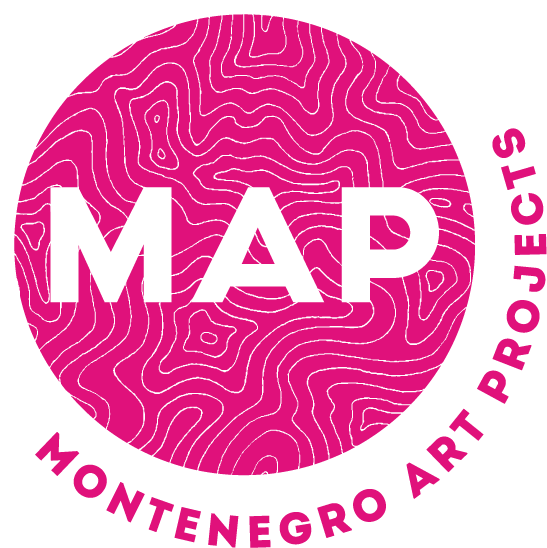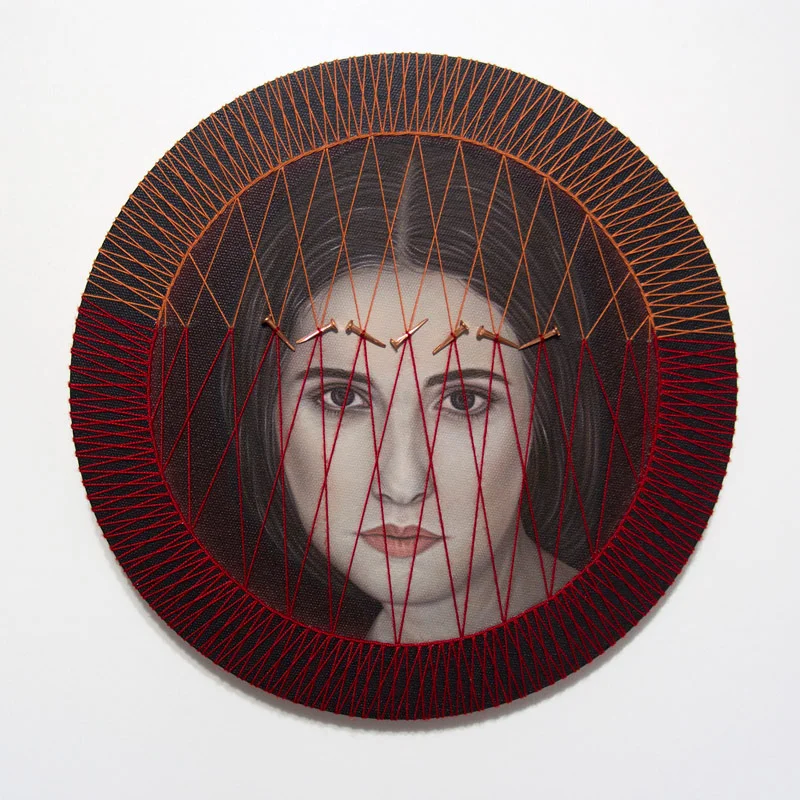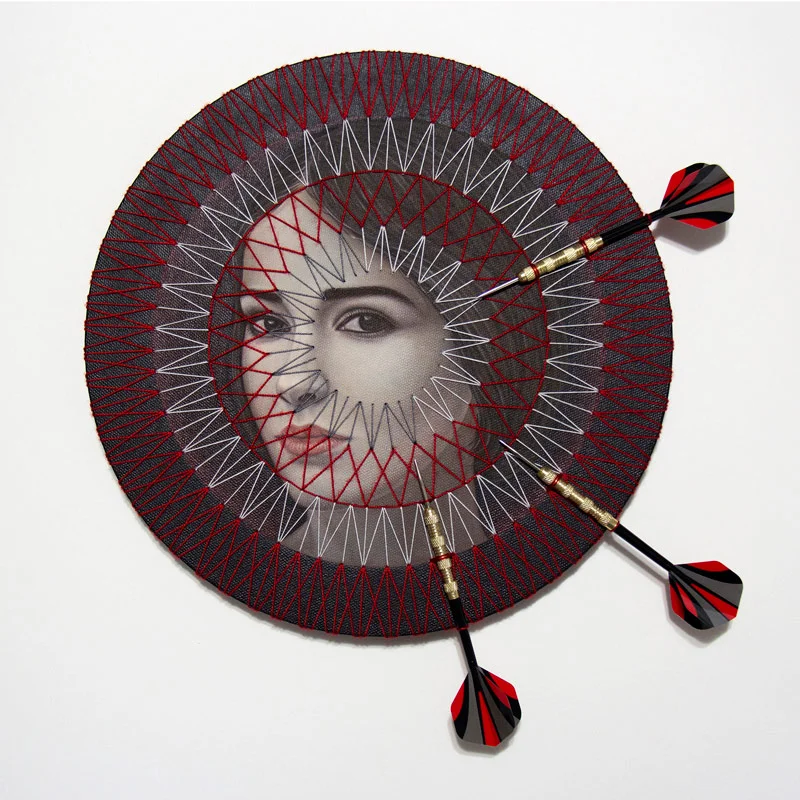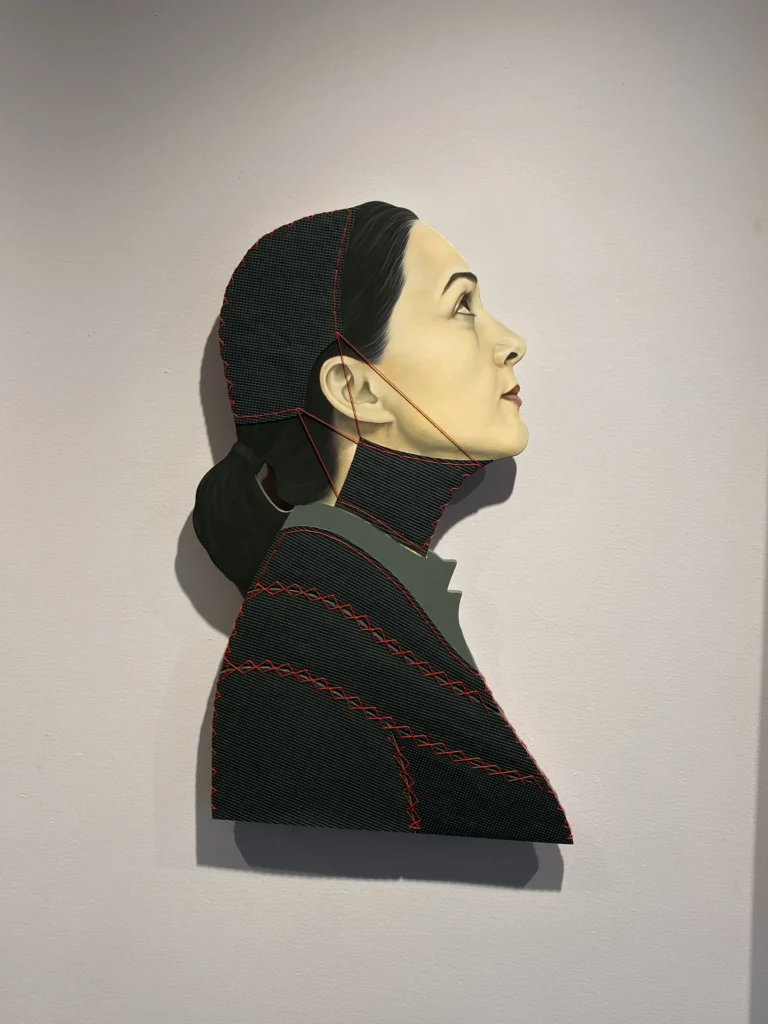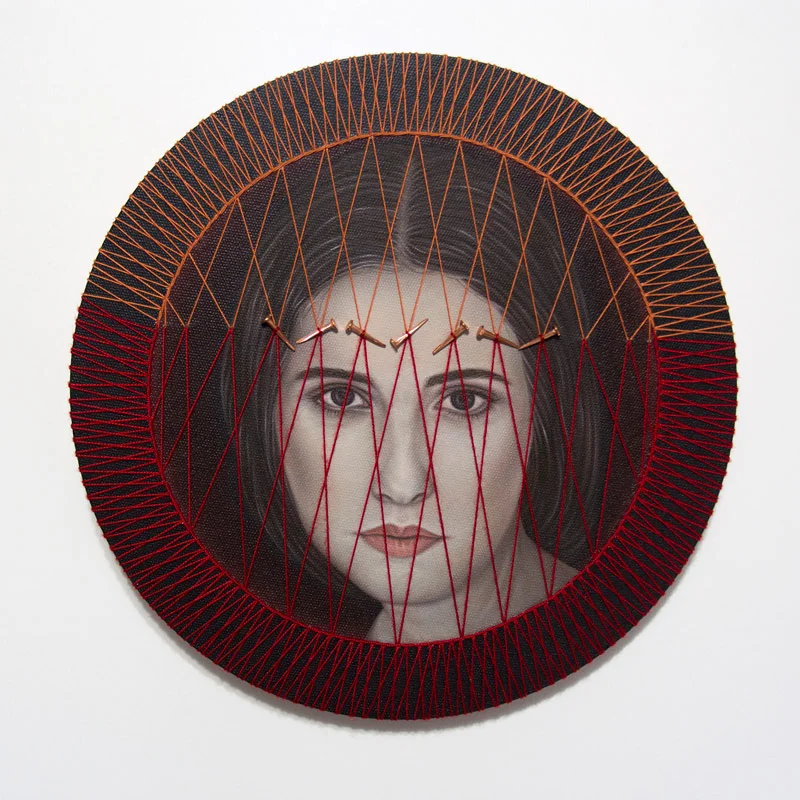Aimée García

Ha mantenido el autorretrato como un elemento constante en su obra. Su enfoque no se centra en su propia vida, sino en la experiencia femenina universal. Sus creaciones invitan a reflexionar sobre la vida, la historia, las contradicciones de género, los recuerdos y el entorno político y social. Aimée emplea un discurso existencial abierto con múltiples implicaciones.
Aunque la pintura ha desempeñado un papel destacado en su obra, siempre ha buscado integrar otros materiales para establecer un juego simbólico. Utiliza pelo, hilos, metal, piedras, papel periódico y otros elementos para crear un diálogo entre lo tradicional y lo contemporáneo. En el caso de objetos e instalaciones, explora el significado de los materiales y objetos que emplea, generando un diálogo con la acción de intervenir y el material utilizado en su proceso de intervención. Por ejemplo, borda periódicos o cacerolas, empleando objetos de la vida cotidiana para abordar un discurso sobre el entorno cultural, político y social.
Ha realizado exposiciones personales en el Centro de Arte Contemporáneo Wifredo Lam, La Habana (Cuba); Museo Alejandro Otero, Caracas (venezuela); Couturier Gallery, Los Ángeles (EE.UU:); Fraser Gallery, Washington DC (EE.UU.); Gallery at Foyles Bookshop, Londres (Reino Unido).
Sus obras se encuentran en colecciones públicas tales como Museo Nacional de Bellas Artes, La Habana, Cuba; ASU Art Museum, Arizona, EE.UU.; Museo del Barrio, Nueva York, EE.UU.; University of Virginia Art Museum, Virginia. EE.UU.; Jordan Schnitzer Museum of Art. Museum of Finest Cuban Arts (MOFCA), Viena, Austria; The Farber Cuban Avant-Garde Collection, USC Fisher Museum of Art, Los Angeles.; Pérez Art Museum Miami (PAMM), Miami, EE.UU.
Self-portrait has remained a constant element in her work. Her focus is not on her own life, but on the universal female experience. Her creations invite reflection on life, history, gender contradictions, memory, and the political and social environment. Aimée articulates an open-ended existential discourse with multiple implications.
Although painting has played a prominent role in her practice, she has continuously sought to incorporate other materials to establish a symbolic interplay. She uses hair, thread, metal, stones, newspaper, and other elements to create a dialogue between the traditional and the contemporary. In the case of objects and installations, she explores the meaning of the materials and objects she employs, generating a dialogue between the act of intervention and the material used in the process. For example, she embroiders newspapers or cooking pots, using everyday objects to address cultural, political, and social issues.
She has held solo exhibitions at the Wifredo Lam Contemporary Art Center, Havana (Cuba); Museo Alejandro Otero, Caracas (Venezuela); Couturier Gallery, Los Angeles (USA); Fraser Gallery, Washington, DC (USA); and the Gallery at Foyles Bookshop, London (UK).
Her works are held in public collections such as the National Museum of Fine Arts, Havana, Cuba; ASU Art Museum, Arizona, USA; El Museo del Barrio, New York, USA; University of Virginia Art Museum, Virginia, USA; Jordan Schnitzer Museum of Art and the Museum of Finest Cuban Arts (MOFCA), Vienna, Austria; The Farber Cuban Avant-Garde Collection, USC Fisher Museum of Art, Los Angeles; and Pérez Art Museum Miami (PAMM), Miami, USA.
